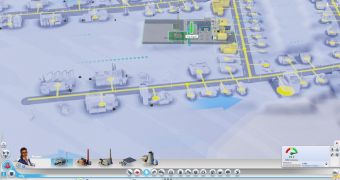Looking at raw data has never felt so good in a SimCity game and the development team at Maxis should really try to kickstart academic uses for its game, which would make a great tool for those interested in urban development and organic city evolution.
In previous SimCity titles, I dreaded the moment when I had to get into one of the layers and look at how water was flowing around the city or at the way electricity was distributed because the design was cluttered and I needed a few minutes to understand what the game was about.
The Maxis reboot is superb in this department and I often spend tens of minutes without looking at the actual city but simply switching between the various data-driven views, trying to see something that could be tweaked or improved.
The team has created a simple white background that allows the colors to stand out and actually tell a story about the game, regardless of the view that the player is using.
The data-driven part of SimCity allows me to see where pollution is at its highest so that I am able to place parks and take residents away to cleaner areas of my city.
The residential views make it easy to understand where I have exaggerated with my residential areas and how to better shape my commercial districts in order to promote business and generate more revenue via taxes.
The smaller cities of the new incarnation of the series are a contributing factor to the ease of use for SimCity, but I’m sure that the current data layers can be scaled to the bigger settlements that might be delivered later during the game’s life cycle.
The only problem with all this beautiful data is that some gamers might ignore its existence altogether and simply develop their cities via instinct, which goes against the core philosophy of the new SimCity.

 14 DAY TRIAL //
14 DAY TRIAL //